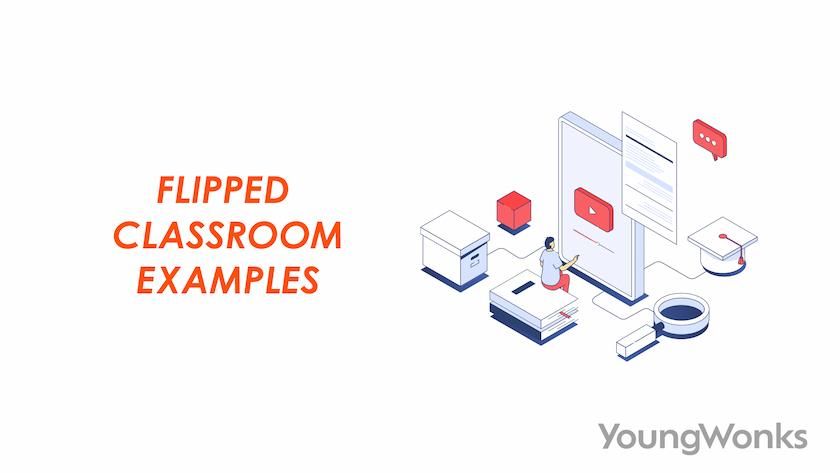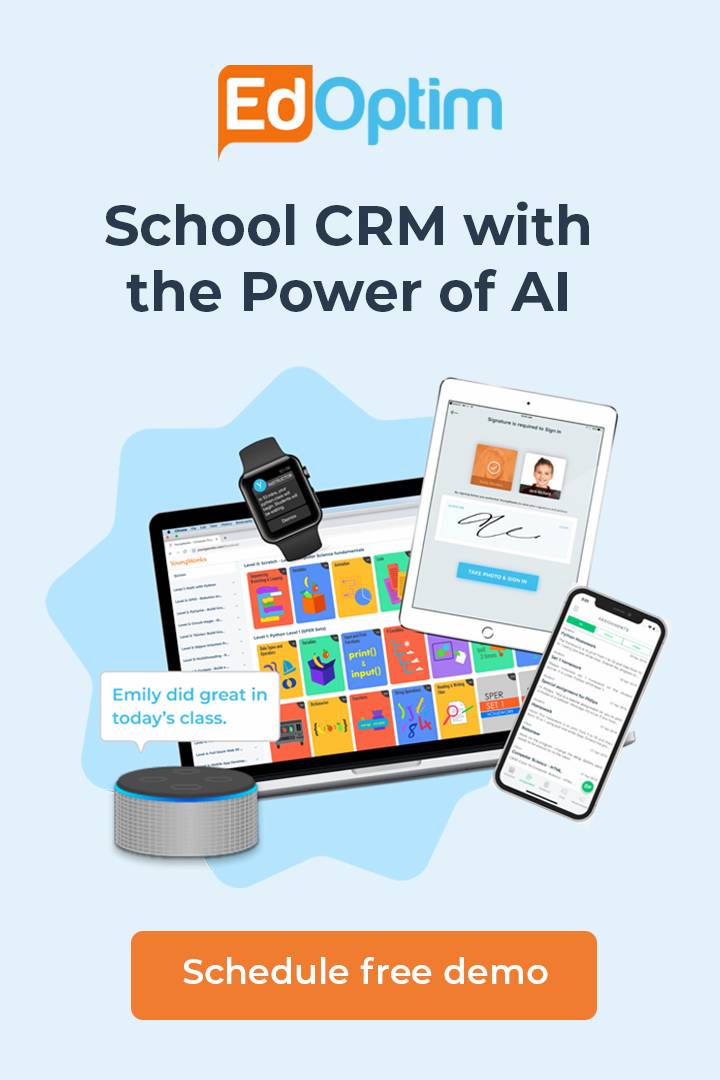Feb 11, 2025 By Team EdOptim *
What Is a Flipped Classroom?
A flipped classroom is a modern teaching method that reimagines traditional learning by reversing the typical structure of lessons. In this approach, students prepare for lessons outside the classroom by engaging with instructional videos, podcasts, and other online resources. This preparation shifts the focus of classroom time from passive listening to active engagement, such as group discussions, problem-solving, and interactive activities.
By moving lectures to a pre-class setting, the flipped model fosters critical thinking and promotes a hands-on understanding of the material. This approach not only enhances student participation but also encourages personalized and collaborative learning experiences tailored to individual needs.
Key Features of the Flipped Classroom Model
Pre-Class Preparation
- The flipped classroom begins before students step into the classroom. Teachers provide learning materials such as video lectures, articles, or PowerPoint presentations.
- Students engage with this content at their own pace, enabling them to revisit concepts as needed to ensure a foundational understanding.
- For instance, a physics class might require students to watch a simulation of Newton’s laws and read supporting material, preparing them to experiment with these laws during class.
In-Class Activities
- Instead of passive listening, students participate in group activities, problem-solving exercises, and case studies.
- These interactive sessions allow learners to apply the knowledge gained during pre-class preparation, reinforcing their understanding through real-world applications.
- For example, in a history class, students might debate the causes of a historical event or work collaboratively to analyze primary sources.
Real-Time Feedback
- Teachers act as facilitators during classroom time, guiding discussions, clarifying doubts, and providing real-time feedback.
- This approach enables educators to identify students' strengths and weaknesses, address misunderstandings immediately, and adapt their teaching strategies for improved learning outcomes.
- A math teacher, for example, might observe students working on equations during class and offer insights to correct their approach or deepen their understanding.
Flipped Classroom: A Brief History
The concept of the flipped classroom gained widespread attention in 2007, thanks to the innovative efforts of Jonathan Bergmann and Aaron Sams, two high school chemistry teachers. They began recording their lectures to help students who missed class, allowing these students to catch up at their convenience. However, the recorded lectures soon became a transformative tool for their entire teaching approach.
By assigning these videos as pre-class activities, Bergmann and Sams freed up class time for group work, interactive problem-solving, and deeper exploration of concepts. They observed a marked improvement in student engagement, understanding, and performance, particularly among students who benefited from being able to learn at their own pace.
Evolution of the Model
Before Bergmann and Sams: Although they popularized the term, the flipped classroom approach has roots in earlier blended learning and student-centered teaching methods. Early adopters in higher education experimented with distributing printed materials and audiotapes for pre-class preparation, though these lacked the dynamic capabilities of modern instructional videos and online tools.
2012 and Beyond: With advancements in learning management systems (LMS) and online platforms like YouTube, the flipped classroom model became more accessible. Schools and universities worldwide began using technology to create learning environments that prioritized active learning during classroom time.
Notable Implementations
Higher Education: Universities like Harvard and Stanford incorporated the flipped model into courses such as computer science and engineering, demonstrating its potential to handle complex, technical subjects.
Corporate Training: Companies adopted the model for employee development programs, delivering instructional videos and podcasts for pre-training and using in-class sessions for hands-on projects.
Benefits of Flipping the Classroom
Enhanced Student Engagement
○ Interactive in-class activities such as group discussions and quizzes keep students actively involved.
○ Students feel more connected to the subject matter, enhancing their overall learning experience.
Deeper Understanding
○ Reviewing learning materials before class helps students focus on clarifying doubts and building a solid foundation during classroom activities.
○ The approach nurtures critical thinking and fosters a deeper understanding of complex topics.
Student-Centered Learning
○ The flipped model adapts to diverse teaching methods, promoting inclusivity and empowering learners to take charge of their education.
○ Students can revisit online resources or instructional videos at their own pace to strengthen their knowledge.
Optimized Class Time
○ Teachers can use classroom time for interactive projects, experiments, and problem-solving, leading to more dynamic class sessions.
○ Educators spend less time lecturing and more time supporting students’ learning.
Blended Learning Opportunities
○ Combining traditional and online learning techniques enriches the learning process, creating a robust learning environment.
Examples of Flipped Classrooms
Flipped Classroom in English Classes
○ Pre-Class: Students watch podcasts or read articles analyzing Shakespearean plays.
○ In Class: Small groups perform scenes, discuss themes, and evaluate character motivations, fostering group-based exploration of literature.
Flipped Classroom in Science Education
○ Pre-Class: Learners view simulations explaining chemical reactions.
○ Classroom Activities: Conduct experiments in labs, working collaboratively to analyze results and refine hypotheses.
Higher Education Implementation
○ Case Study: In universities, professors use learning management systems (LMS) to distribute pre-class materials like lecture slides and videos.
○ During classroom time, students engage in debates or class discussions on real-world applications of theories.
Corporate Training
○ Employees review tutorials on workplace tools via LMS. In-class activities focus on hands-on training and collaborative problem-solving to boost retention.
How to Implement a Flipped Classroom
1. Start With Clear Objectives
● Define the goals of flipping your classroom. Focus on desired outcomes like improved student understanding or enhanced learning activities.
2. Create Engaging Pre-Class Content
● Use instructional videos, podcasts, and interactive tutorials tailored to your lesson plans.
● Ensure content is accessible via an LMS or other online learning platforms.
3. Design Active In-Class Activities
● Plan group activities, quizzes, and collaborative exercises that encourage participation.
● Include activities that challenge problem-solving and promote critical thinking.
4. Foster Student Accountability
● Encourage learners to complete pre-class preparation by linking it to classroom activities or assessments.
5. Provide Real-Time Feedback
● Use class time to monitor students’ progress and offer constructive feedback on their understanding.
6. Evaluate and Adapt
● Continuously refine the flipped model by collecting feedback from learners and observing changes in learning outcomes.
Successful Flipped Classroom Strategies
Integrating Technology
○ Use LMS platforms like Moodle or Canvas to share materials and manage progress.
○ Incorporate apps for real-time polling or interactive quizzes.
Collaborative Learning
○ Design group-based projects that require teamwork and application of concepts.
○ Foster group work to promote social interaction and mutual understanding among students.
Encouraging Peer Teaching
○ Assign small groups to teach specific topics during class sessions. This strengthens their grasp of the material and benefits the entire class.
The Impact of Flipped Classrooms
The flipped classroom approach transforms the way education is delivered and received. It replaces passive listening with active learning, helping students develop critical skills needed for the modern world. Whether it’s analyzing literature, conducting scientific experiments, or debating case studies, flipping the classroom creates a more vibrant and engaging learning environment.
Educators who adopt this model report improvements in students’ understanding, higher student engagement, and better preparation for real-world challenges. By leveraging technology and rethinking teaching methods, flipped classrooms offer a balanced blend of tradition and innovation.
FAQs on Flipped Classroom
1. What Is a Flipped Classroom Example?
In a flipped class, students might watch an online lecture on historical events before attending class to discuss their implications through group activities.
2. How Does the Flipped Classroom Model Work?
The flipped model involves shifting passive content consumption to homework and using classroom time for interactive and collaborative activities.
3. What Are Flipped Classroom Activities?
Activities include group discussions, debates, problem-solving exercises, and hands-on projects conducted during class time.
4. What Are the Benefits of a Flipped Classroom?
Benefits include improved engagement, personalized learning, better use of classroom time, and development of critical thinking skills.
5. How Can Teachers Flip Their Classrooms Effectively?
Teachers can start small by flipping one lesson, using readily available resources like video lectures and aligning in-class activities to complement pre-class preparation.
Conclusion
The flipped classroom is a powerful approach that redefines how educators deliver content and students acquire knowledge. By focusing on active learning and leveraging online resources, this model transforms the traditional classroom into a hub for collaboration, exploration, and critical thinking. The flipped classroom reverses the typical teaching paradigm, freeing up in-class time for group activities, problem-solving, and critical discussions that deepen understanding. While implementation requires effort, the rewards of enhanced learning outcomes, deeper engagement, and a dynamic learning environment make flipping your classroom worth the endeavor. Go ahead and flip your classroom to create a more interactive and student-centered learning experience.
Whether in high schools, universities, or corporate training, the flipped model exemplifies how education can evolve to meet the needs of modern learners and embrace new teaching methods for a more effective learning process.
*Contributors: Written by Prasanna MG; Edited by Alisha Ahmed; Lead image by Shivendra Singh

